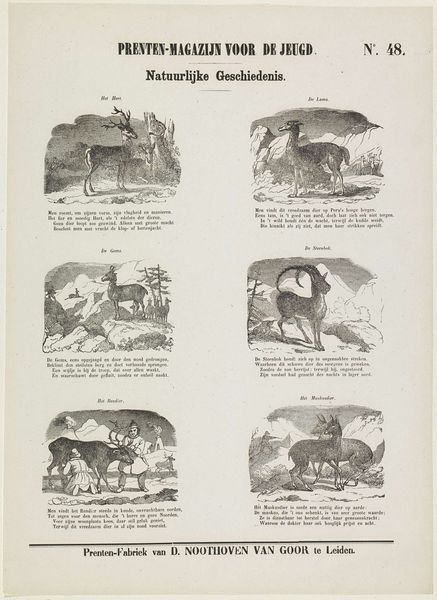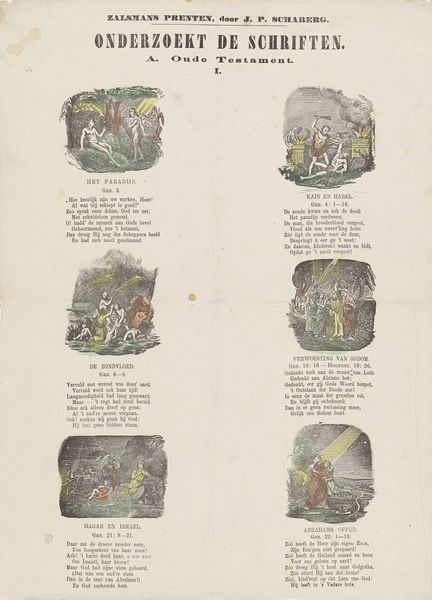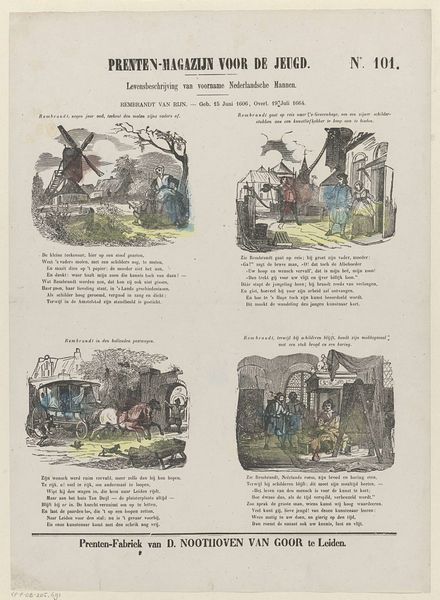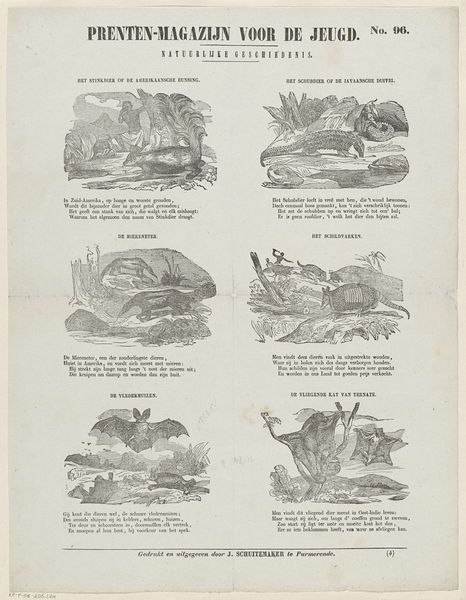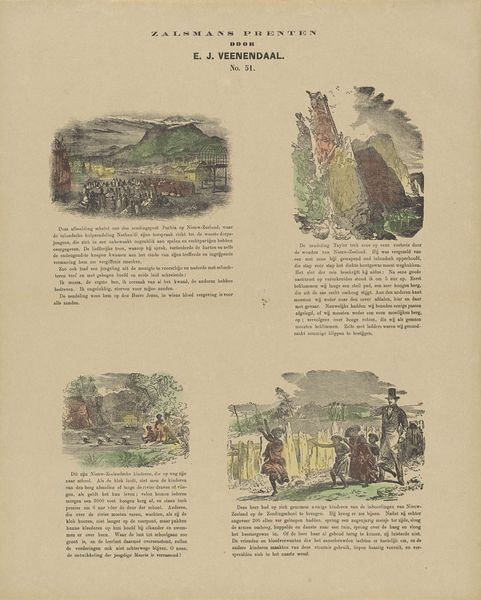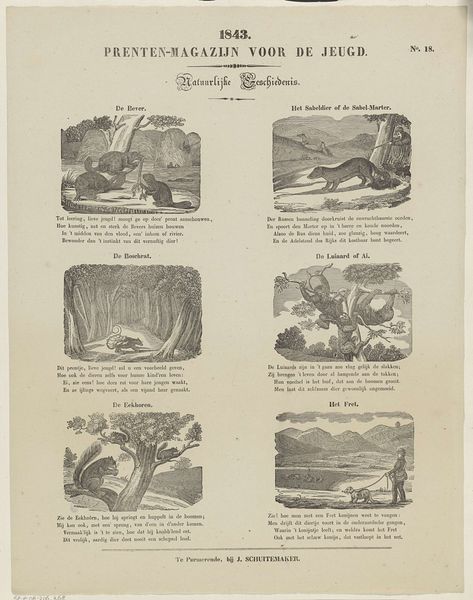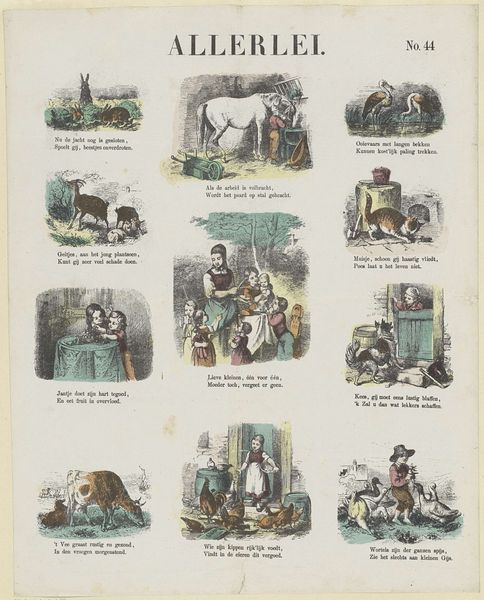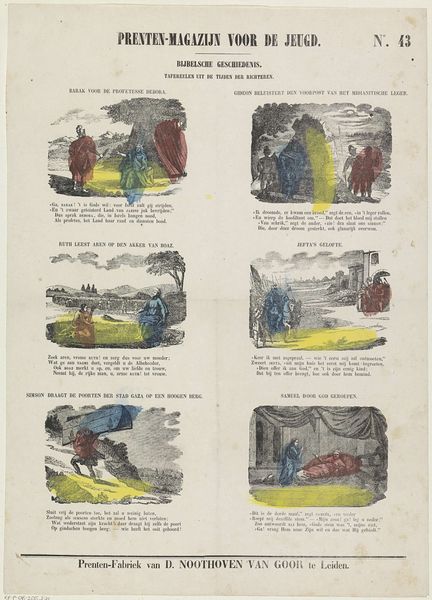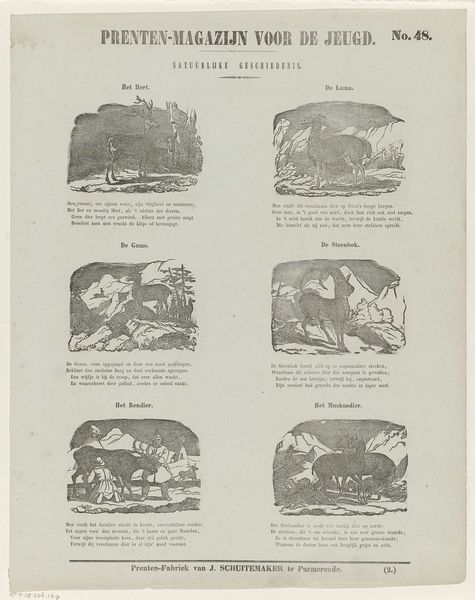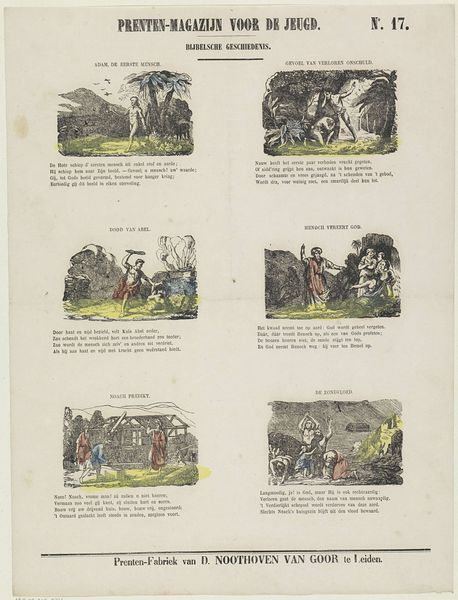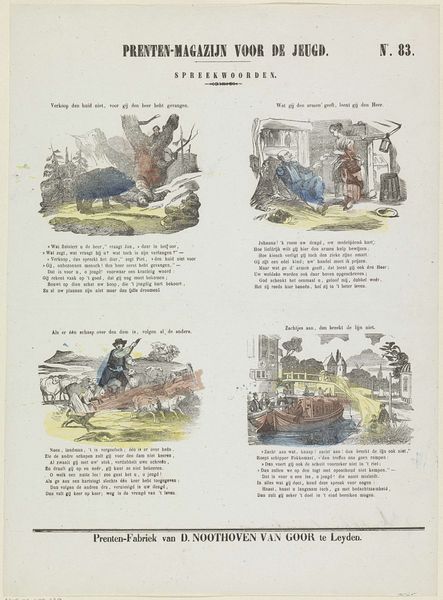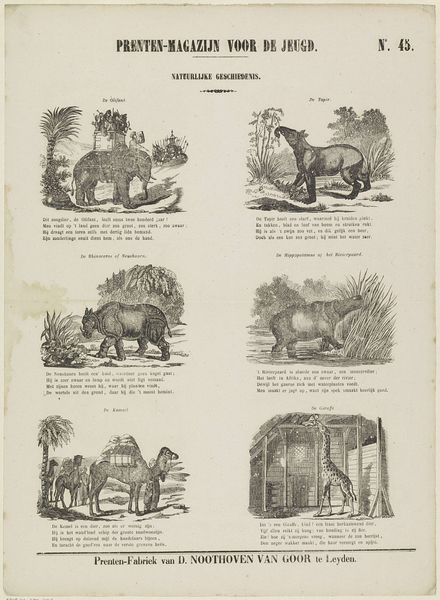
print, engraving
# print
#
genre-painting
#
naturalism
#
engraving
Dimensions: height 419 mm, width 307 mm
Copyright: Rijks Museum: Open Domain
Curator: Today we are looking at "De Apen," which translates to "The Monkeys." It’s a print, an engraving actually, made sometime between 1850 and 1881 by Dirk Noothoven van Goor. It depicts several different species of monkeys in various little vignettes. Editor: My initial impression is one of unease. The whole sheet feels like a visual taxonomy that flattens animal beings for, presumably, human consumption. Each tiny framed image positions these creatures under our gaze and control. Curator: Absolutely. This work and others like it played a role in shaping European perceptions of the "natural world," particularly concerning primates. Given its stated purpose of juvenile education, what lessons, intended and unintended, were being conveyed about the relationship between humans and animals, or more specifically, white Europeans and non-human primates? Consider how scientific "objectivity" often reinforced colonial power structures. Editor: Yes, the arrangement reminds me of medieval bestiaries or emblem books. Each animal acts as a symbol—a cultural shorthand. The orangutan acting like a human by a table with utensils... are we supposed to find it charming or believe it illustrates some "missing link?" And then there’s that chimp behind bars… that specific cage and its implications of captivity and display strike a heavy symbolic chord. Curator: These visual signifiers cemented ideas of hierarchy and "otherness," but in this period, were ideas about race also being projected onto primates and what visual cues point us to this relationship? Are there physiognomic qualities they associate between the primates featured and particular human ethnicities? Editor: The lack of individual expression bothers me. These are meant to be representative "types," almost allegorical figures. Perhaps, each ape holds an encoded representation of humanity, forcing a confrontation with our primal nature. Are these mere biological observations or commentaries on humanity's wilder side? Curator: This engraving reminds me how representations become so powerful in shaping understanding. Decolonizing minds means questioning the stories our cultures transmit through imagery. Editor: Ultimately, contemplating these kinds of works compels us to analyze historical biases embedded within visual languages that echo into the present.
Comments
No comments
Be the first to comment and join the conversation on the ultimate creative platform.
